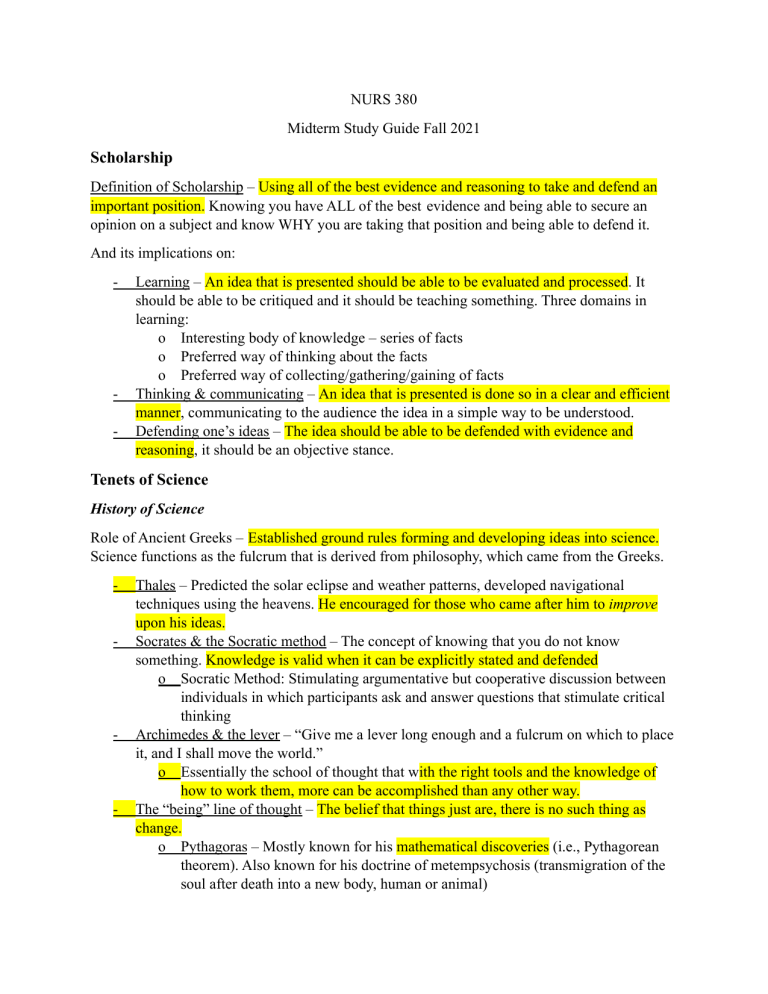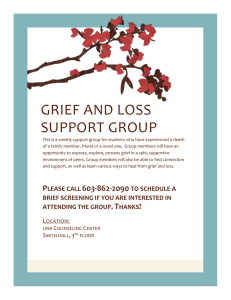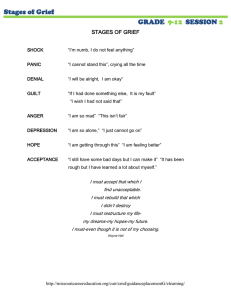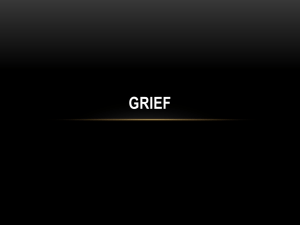
NURS 380 Midterm Study Guide Fall 2021 Scholarship Definition of Scholarship – Using all of the best evidence and reasoning to take and defend an important position. Knowing you have ALL of the best evidence and being able to secure an opinion on a subject and know WHY you are taking that position and being able to defend it. And its implications on: - - Learning – An idea that is presented should be able to be evaluated and processed. It should be able to be critiqued and it should be teaching something. Three domains in learning: o Interesting body of knowledge – series of facts o Preferred way of thinking about the facts o Preferred way of collecting/gathering/gaining of facts Thinking & communicating – An idea that is presented is done so in a clear and efficient manner, communicating to the audience the idea in a simple way to be understood. Defending one’s ideas – The idea should be able to be defended with evidence and reasoning, it should be an objective stance. Tenets of Science History of Science Role of Ancient Greeks – Established ground rules forming and developing ideas into science. Science functions as the fulcrum that is derived from philosophy, which came from the Greeks. - - - - Thales – Predicted the solar eclipse and weather patterns, developed navigational techniques using the heavens. He encouraged for those who came after him to improve upon his ideas. Socrates & the Socratic method – The concept of knowing that you do not know something. Knowledge is valid when it can be explicitly stated and defended o Socratic Method: Stimulating argumentative but cooperative discussion between individuals in which participants ask and answer questions that stimulate critical thinking Archimedes & the lever – “Give me a lever long enough and a fulcrum on which to place it, and I shall move the world.” o Essentially the school of thought that with the right tools and the knowledge of how to work them, more can be accomplished than any other way. The “being” line of thought – The belief that things just are, there is no such thing as change. o Pythagoras – Mostly known for his mathematical discoveries (i.e., Pythagorean theorem). Also known for his doctrine of metempsychosis (transmigration of the soul after death into a new body, human or animal) o - Plato – Pinnacle of rationalism, truth had to be true in all places and times (in other words, it cannot be true only in certain instances), concept of Forms (everything in the world we perceive is just a reflection/shadow of the perfect form of the thing) and inherent truths ▪ Viewed as platonic rationalist ▪ “Allegory of the Cave” The “becoming” line of thought – Change is the only constant. o Aristotle – Pinnacle of empiricism, used both sensory (beyond the 5 most common senses of sight, smell, taste, hearing, and touch) and logical information ▪ Syllogism – a line of thought, a type of deductive reasoning. Three lines, 2 statements, and a deduction. • Importance of Renaissance The Renaissance marked a period in Europe in which people adopted a secular ideology of the world. It signified a time in which there was a change (improvement) in art, knowledge, and culture. They went away with the thoughts that everything was based on religion and understood many new concepts of science which in turn allowed for new inventions. These inventions (i.e., gunpowder, Silk Road trading route) ultimately helped improve the state of Europe. Expansion of new worlds. • Drivers of the Renaissance The main source of inspiration for the Renaissance was a shift into the idea of “humanism” which came from the concept of “Roman humanitas” (meaning human nature, civilization, and kindness) and from classical Greek philosophy, such as the teachings of Pythagoras, Plato, and Aristotle, the former two who preached a “being” line of thought, and the latter preaching the “becoming” line of thought. - Cross fertilization (?) Silk Road Among the more valuable people who were left created a mass amount of inventions The power of precision and clarity • Implications for science The Renaissance had major effects on the scientific field. First and foremost, it was the acceptance of scientific ideologies that ultimately gave rise to the innovations that came with it. Not only were there discoveries which improved the wealth of Europe (Silk Road allowing for more trading routes, colonization of the “New World”), but there were also technological advances such as the discovery of gunpowder and advancement of the lens craft. The lens craft allowed for better gun range in war for Europeans alongside being able to identify other planets and constellations and better understanding the microscopic makeup of living creatures. - With the Renaissance, the culture that generated science moved away from platonic thought. Moved away from inert, perfect truth to a continuous process of trying to learn. Tenets of Science • Definition of science – Using systematic, empirical information to make objective decisions - Think of the 7 steps of the Scientific Method! → A system of observing and recording data based off a hypothesis to yield a new discovery, such that when the steps are repeated, similar or the same results are produced. • Characteristics of research: - - - - Empiricism – Using your senses (beyond the 5 most common senses of sight, smell, taste, hearing, and touch) to gain information. It is based on direct observation as much as possible, it is meant to be unbiased. Objectivity – Taking an objective, unbiased standing on a matter. The experiment should yield the same results no matter how many times it is performed or by who. Precision – Detailed and accurate information Parsimony – As simple as possible, gets straight to the point Logic o Induction – From specific to general (Observation → Pattern → Hypothesis → Theory → Observation) o Deduction – From general to specific (Theory → Hypothesis → Observation → Confirmation→ Theory) Conditional conclusions – Precision in what is known and unknown. Otherwise, being able to understand conditional, complex ideas can be difficult, so it is usually presented in the condition “If…, then…” format. Systematicity of Investigations o Cumulative – Running the investigation multiple times o Verifiability – That the investigation can be repeated and yield the same results • Definition & roles of theory – Scientific theories that explain certain phenomena. They usually explain how things happen and the concepts that occur when an event is taking place (i.e., think of how to explain the theory of solidification). ◦ Definition & roles of models – A simplified/idealized concept of a system that allows a person to understand the concept through a visual diagram (i.e., Bohr model of an atom). Theories Diffusion of Innovation - - Five stages of adoption – Knowledge/awareness, persuasion, decision, implementation, continuation o Process of adoption (i.e., how the stages are navigated by potential adopters) Characteristics of early adopters of an innovation – Ability/agency to implement innovations - Characteristics of social systems that affect the diffusion of innovation – A system that allows, empowers, and accepts the ability to change practice. Motivation and the assessment of risks and benefits. Nightingale • Role of her personality in her work She adopted progressive ideals about society and women’s rights into her personality, which pushed her to pursue the career path that she chose. Additionally, she was of the idea that God brought her for a life of service which pushed her to help others as much as she could. She was a very sociable person, establishing many connections with many influential people, which as a result, she used to her advantage to affect health and social changes. • Work during Crimean War Nightingale worked at the Scutari Hospital during the Crimean War. When she saw the poor state of the facilities, she used her connections at The Times in the UK to request (and she received) better hospital facilities. Her work resulted in the construction of the Renkioi Hospital and the removal of the filthy conditions of Scutari Hospital. • Role of evidence & statistics in her legacy She worked closely with her colleagues to affect change in sanitation. Nightingale accessed data on health and hygiene in the military and published several reports – as well as articles – for the public which she used to push for regular reporting of hospital statistics. • Importance of “theory of evidence” in healthcare Didn’t use a lot of evidence in her work initially, but after her work in the hospital finished, she used statistical data to back up and implement patient care methods that helped improve the mortality rate in hospitals. • Types of analyses & presentations she did Coxcombs/Polar area chart of the deaths at the hospitals during the Crimean War. Didn’t do it during, but rather afterwards. Presented it in a compelling way such that everyone could see the cyclical pattern of death. • Her legacy (Refer above) Grief - - Bowlby and Marray-Parkes’ stages of bereavement – Kubler-Ross was not the first person to have a grief theory. Bowlby had a theory beforehand, and Kubler-Ross made it more famous. Kubler-Ross’s Five-Stage Theory o - How Kubler-Ross established her stages – She interviewed patients who were diagnosed with terminal illness and sought out counsel and detailed the emotions they seemingly went through. o The stages in Kubler-Ross’s Five-Stage Theory – DABDA; denial, anger, bargaining, depression, acceptance o Proper and improper interpretations of the Five Stage Theory ▪ Improper: the stages are fixed in position, and one must go through a specific stage to get to the next stage ▪ Proper: A suggested way of grieving o Criticisms of the Five-Stage Theory – The model was never scientifically tested, and the investigation was biased. ▪ Included only patients who sought out counsel ▪ The stages are not representative of the typical grieving process ▪ Implied that if a person doesn’t go through those stages exactly or skipped a stage/didn’t reach one, then they didn’t grieve properly or that they were still stuck in a certain stage o Results of research on the Five-Stage Theory – Research didn’t strongly support the Five-Stages Theory because it was biased and implied that if people didn’t follow the stages exactly, then they were grieving incorrectly. ▪ Strengths and weaknesses of the Yale Bereavement Study ● Strengths: Predominant reaction was acceptance and there wasn’t strong evidence for going through stages even though the authors concluded that there were stages (data of study did not support conclusion) ● Weaknesses: Only asked one question: “How happy are you?” It was a cross sectional study and didn’t look at one/a few individuals overtime and monitor changes, but rather looked at a group of people at certain times. o Legacy of Kubler-Ross and the Five-Stage Theory – Increased awareness of the needs of those dying. It continues to impact people today and helps those who are going through the grieving process (for good or for bad). It helps people understand their own feelings while experiencing grief. Bereavement patterns o What they look like – Resilience was prevalent (nearly half of the people) in this study. Depression was also a common reaction. Main patterns: ▪ Chronic grief ▪ Chronic depression ▪ Improved depression ▪ Resilience o How common they are o What predicts them (and what doesn’t) ▪ Predicts non-resilience: High pessimism and belief in injustice. Neuroticism, less able to regulate emotions. External locus of control ▪ - - - Predicts resilience: Pretty much the opposite of the above. They had more social support and acceptance of death was instrumental. Grief processing tasks o Acceptance o Processing pain and grief o Adjusting to new reality o Reforming relationships – including with lost one The Dual Process theory – Loss orientation and restoration orientation. In both, you are feeling that you lost something and subsequently dealing with the loss. They are happening at different wavelengths. They can happen together, or one happens faster while the other happens slower. It is not in stages, but happens in waves, but you come back to them and work through them – essentially the idea that people grief differently and it will look different for most people. Implications for nursing practice – Patient centered care! Nursing implications would be pre-loss preparation helping those grasp the idea, explain the goals of grieving, help those understand what some predictors of chronic grief are, and provide help to those in need. Understanding the grieving process allows nurses to help those in need work at their own pace and allows them to think of next steps to deal with the grieving process, such as referring the patient to a counselor. o Complicated grief and prolonged grief disorder – Prolonged grief is the most common form of complicated grief in adults. It is different from normal grief in that the immediate grief reactions persist over time with more or less undiminished strength, causing a considerable loss of everyday functioning.


